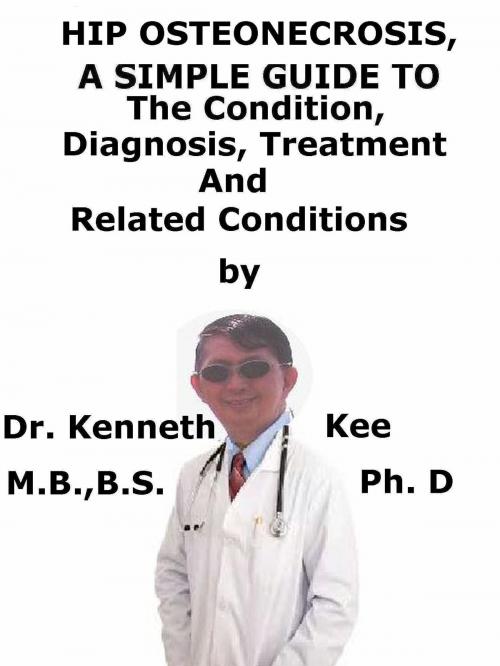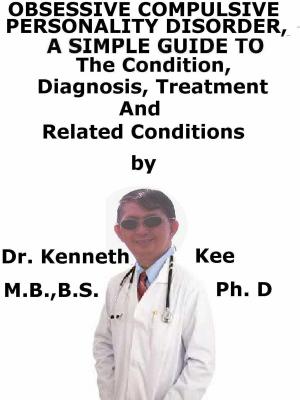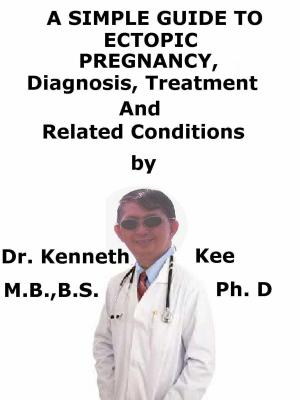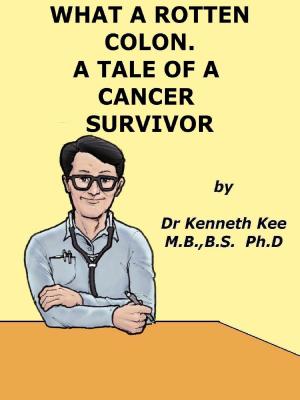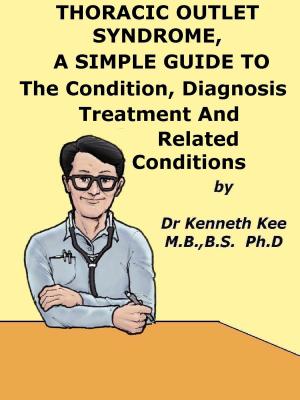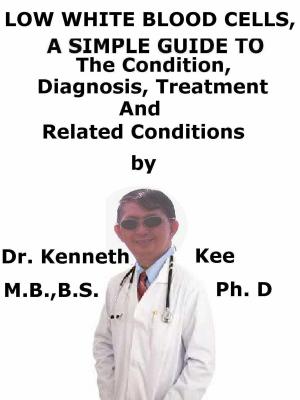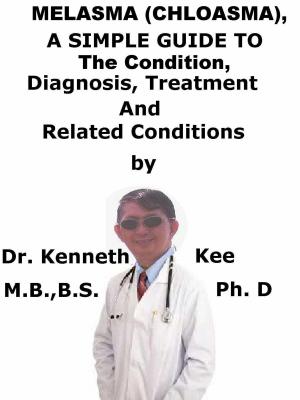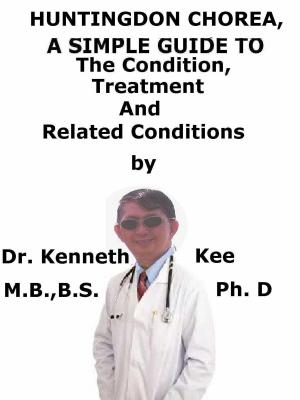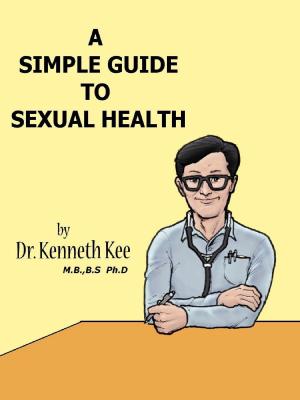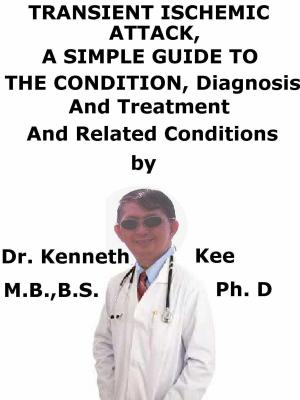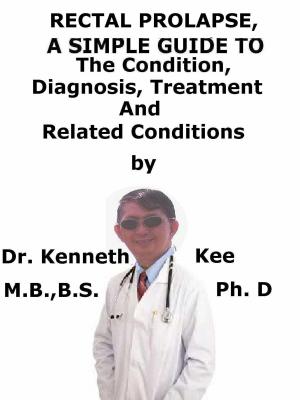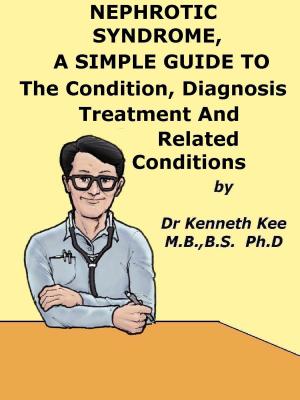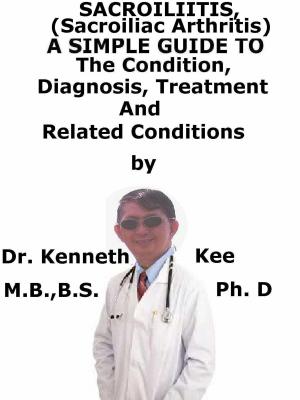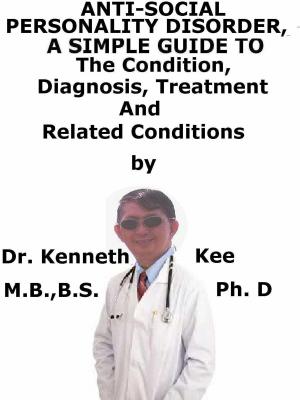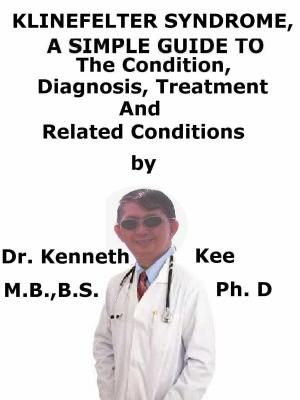Hip Osteonecrosis A Simple Guide To The Condition, Diagnosis, Treatment And Related Conditions
Nonfiction, Health & Well Being, Health, Ailments & Diseases, Musculoskeletal, Medical, Specialties, Orthopedics| Author: | Kenneth Kee | ISBN: | 9780463066584 |
| Publisher: | Kenneth Kee | Publication: | June 6, 2018 |
| Imprint: | Smashwords Edition | Language: | English |
| Author: | Kenneth Kee |
| ISBN: | 9780463066584 |
| Publisher: | Kenneth Kee |
| Publication: | June 6, 2018 |
| Imprint: | Smashwords Edition |
| Language: | English |
This book describes Hip Osteonecrosis, Diagnosis and Treatment and Related Diseases
Osteonecrosis is bone death caused by poor blood supply.
It is most common in the hip and shoulder, but can affect other large joints such as the knee, elbow, wrist and ankle.
While osteonecrosis affects people of all ages, it most often occurs between the ages of 40 and 65.
Men develop osteonecrosis more often than women.
Causes
Osteonecrosis of the hip is a painful disorder that occurs when the blood supply to the bone is interrupted.
Because bone cells die without a blood supply, osteonecrosis can ultimately lead to destruction of the hip joint and arthritis.
1.Injury — Hip dislocations, hip fractures, and other injuries impair circulation to the femoral head
2.Alcoholism
3.Corticosteroid medicines
4.Other medical disorders:
a.Caisson disease ("the bends")
b.Sickle cell disease,
c.Myeloproliferative disorders,
d.Gaucher's disease
e.Systemic lupus erythematosus
f.Crohn's disease,
g.HIV or taking HIV drugs
h.Radiation therapy
i.Legg-Calve-Perthes disease
j.Arterial embolism,
k.Clotting disorders
l.Vasculitis
Symptoms
There are no symptoms in the early stages.
As bone damage worsens, the patient may have these symptoms:
1.Pain in the joint that may increase over time and becomes severe if the bone collapses
2.Pain that occurs even at rest
3.Limited range of motion
4.Groin pain, if the hip joint is affected
5.Limping, if the disorder occurs in the leg
Osteonecrosis develops in stages and hip pain is typically the first symptom.
This may lead to a dull ache or throbbing pain in the groin or buttock area.
As the disease progresses, it will become more difficult to stand and put weight on the affected hip, and moving the hip joint will be painful.
How long it takes for the disease to progress through these stages varies from several months to over a year.
Diagnosis:
The patient will be asked about the symptoms and medical history.
The patient will go through a detailed physical examination, with the hip and leg maneuvred into various positions.
Increased pain during certain movements may be a sign of osteonecrosis.
After the exam, the doctor will order one or more of these tests:
1.X-ray
2.MRI
3.CT scan
An x-ray will be taken to examine degradation to the femoral head.
Occasionally the patient may be asked to undertake an MRI scan to show early changes in the bone that may not show up in an x-ray.
Treatment
If the doctor knows the cause of osteonecrosis, part of the treatment will be aimed at the underlying disorder.
If a blood clotting disorder is the cause, treatment will consist, in part, of clot-dissolving medicine.
If the disorder is caught early, the patient will take pain relievers and limit use of the affected area.
This may include using crutches if the hip, knee, or ankle is affected.
The patient may need to do range-of-motion exercises.
Non-surgical treatment
Unfortunately there are no non-surgical treatments that will reverse osteocronosis.
Medication or the use of crutches can relieve pain, however the only corrective approach is through surgical means.
1.A bone graft
2.A bone graft along with its blood supply (vascularized bone graft)
3.Cutting the bone and changing its alignment to relieve stress on the bone or joint (osteotomy)
4.Total joint replacement
5.Removing part of the inside of the bone (core decompression) to relieve pressure and allow new blood vessels to form
Rehabilitation
Surgery is followed by a prolonged course of physiotherapy, a rehabilitation in order to achieve the best possible result (at least half an hour per day for 6 months).
Most patients are able to drive 4 to 6 weeks after surgery.
TABLE OF CONTENT
Introduction
Chapter 1 Hip Osteonecrosis
Chapter 2 Causes
Chapter 3 Symptoms
Chapter 4 Diagnosis
Chapter 5 Treatment
Chapter 6 Prognosis
Chapter 7 Avascular Necrosis
Chapter 8 Osteoporosis
Epilogue
This book describes Hip Osteonecrosis, Diagnosis and Treatment and Related Diseases
Osteonecrosis is bone death caused by poor blood supply.
It is most common in the hip and shoulder, but can affect other large joints such as the knee, elbow, wrist and ankle.
While osteonecrosis affects people of all ages, it most often occurs between the ages of 40 and 65.
Men develop osteonecrosis more often than women.
Causes
Osteonecrosis of the hip is a painful disorder that occurs when the blood supply to the bone is interrupted.
Because bone cells die without a blood supply, osteonecrosis can ultimately lead to destruction of the hip joint and arthritis.
1.Injury — Hip dislocations, hip fractures, and other injuries impair circulation to the femoral head
2.Alcoholism
3.Corticosteroid medicines
4.Other medical disorders:
a.Caisson disease ("the bends")
b.Sickle cell disease,
c.Myeloproliferative disorders,
d.Gaucher's disease
e.Systemic lupus erythematosus
f.Crohn's disease,
g.HIV or taking HIV drugs
h.Radiation therapy
i.Legg-Calve-Perthes disease
j.Arterial embolism,
k.Clotting disorders
l.Vasculitis
Symptoms
There are no symptoms in the early stages.
As bone damage worsens, the patient may have these symptoms:
1.Pain in the joint that may increase over time and becomes severe if the bone collapses
2.Pain that occurs even at rest
3.Limited range of motion
4.Groin pain, if the hip joint is affected
5.Limping, if the disorder occurs in the leg
Osteonecrosis develops in stages and hip pain is typically the first symptom.
This may lead to a dull ache or throbbing pain in the groin or buttock area.
As the disease progresses, it will become more difficult to stand and put weight on the affected hip, and moving the hip joint will be painful.
How long it takes for the disease to progress through these stages varies from several months to over a year.
Diagnosis:
The patient will be asked about the symptoms and medical history.
The patient will go through a detailed physical examination, with the hip and leg maneuvred into various positions.
Increased pain during certain movements may be a sign of osteonecrosis.
After the exam, the doctor will order one or more of these tests:
1.X-ray
2.MRI
3.CT scan
An x-ray will be taken to examine degradation to the femoral head.
Occasionally the patient may be asked to undertake an MRI scan to show early changes in the bone that may not show up in an x-ray.
Treatment
If the doctor knows the cause of osteonecrosis, part of the treatment will be aimed at the underlying disorder.
If a blood clotting disorder is the cause, treatment will consist, in part, of clot-dissolving medicine.
If the disorder is caught early, the patient will take pain relievers and limit use of the affected area.
This may include using crutches if the hip, knee, or ankle is affected.
The patient may need to do range-of-motion exercises.
Non-surgical treatment
Unfortunately there are no non-surgical treatments that will reverse osteocronosis.
Medication or the use of crutches can relieve pain, however the only corrective approach is through surgical means.
1.A bone graft
2.A bone graft along with its blood supply (vascularized bone graft)
3.Cutting the bone and changing its alignment to relieve stress on the bone or joint (osteotomy)
4.Total joint replacement
5.Removing part of the inside of the bone (core decompression) to relieve pressure and allow new blood vessels to form
Rehabilitation
Surgery is followed by a prolonged course of physiotherapy, a rehabilitation in order to achieve the best possible result (at least half an hour per day for 6 months).
Most patients are able to drive 4 to 6 weeks after surgery.
TABLE OF CONTENT
Introduction
Chapter 1 Hip Osteonecrosis
Chapter 2 Causes
Chapter 3 Symptoms
Chapter 4 Diagnosis
Chapter 5 Treatment
Chapter 6 Prognosis
Chapter 7 Avascular Necrosis
Chapter 8 Osteoporosis
Epilogue
